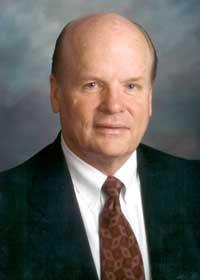
Abstract
Semiconducting nanostructures offer potentially revolutionary advancements in the cost and performance of light emitting diodes for solid state lighting and photovoltaic energy converters. GaN based LEDs are usually fabricated on expensive substrates and suffer from a high density of threading dislocations. In addition, the high current performance of the devices is degraded by efficiency decreases (efficiency droop) that seem to be inherent to current designs. GaN nanorods have been grown that are free of dislocations and serve as templates for the growth of InGaN active emitting regions on nonpolar facets of the nanostructures that may eliminate the causes of the high current efficiency droop. Dense arrays of dislocation free nanorods with InGaN quantum well active regions and LEDs made from them will be described.
High efficiency multijunction solar cells are among the most promising structures to increase the efficiency of solar cells to 50%. Achieving cells with efficiencies that high is impeded by the lack of appropriate sets of lattice matched materials to create multicomponent current matched monolithic structures. Nanorods of semiconductors to form the cell components of such structures are promising because the dislocations that typically form in lattice mismatched epitaxy can be avoided with the nanorod geometry to yield nearly dislocation-free, lattice mismatched structures. As an example, dense, uniform arrays of GaAs nanorods on Si have been developed that promise to enable a new paradigm for the generation of efficient solar cells. We will describe the properties of these materials and discuss our progress towards realizing efficient solar cells.
Biography
P. Daniel (Dan) Dapkus is the W. M. Keck Distinguished Professor of Engineering at the University of Southern California where he has been a faculty member since 1982. He received his BS, MS and PhD in Physics at the University of Illinois at Urbana Champaign. He is currently a faculty member of the Ming Hsieh Department of Electrical Engineering, the Mork Family Department of Chemical Engineering and Materials Science and the Department of Physics at USC. He also is the Director of the Center for Energy Nanoscience and Technology and a DoE Energy Frontier Research Center, The Center for Energy Nanoscience, in Emerging Materials for Solar Energy Conversion and Solid State Lighting. His current research involves the study of semiconductor nanostructures for application to energy devices, photonic materials and devices, and optoelectronic integration. He has received recognition for his work by being awarded the IEEE LEOS Distinguished Lecturer (1993–1994), the IEEE LEOS Engineering Achievement Award (1995), the IEEE David Sarnoff Technical Field Award in electronics (2001), the Optical Society of America Nick Holonyak, Jr. Award (2005), the Heinrich Welker Award of the International Symposium on Compound Semiconductors (2009), and the USC Associates Award for Creativity in Research (2009).